
This is an excerpt from “The Solution at Hand” by Robert Wearing.
There are many types of dovetail markers and as many methods of using them, but I like to think that this marker, A, and its method is pre-eminent.
The plate is made from a piece of 20 gauge brass, steel or alloy 5-1/2″ x 3″ (140 mm x 75 mm). This should be sawn and not cut with snips as these may permanently distort it. Drill the four 5 mm (3/16″) and three 3/32″ (1 mm) corner holes, then sufficient smaller holes to get in a hacksaw blade to cut out the dovetail angle and the two slots. File to shape with great care, rounding the external corners and softening the edges. From an accurate centre line, file the two nicks as shown in B. The bar is a piece of brass channel 3/8″ x 3/8″ x 1/16″ (10 mm x 10 mm x 1.5 mm) and it has one threaded hole and a slot. The hole is threaded 2BA. A sliding block is fitted below the slot and this, too, is threaded 2BA. The bar is secured to the plate, preferably with a pair of 2BA electrical terminals or with wing nuts and washers, C.
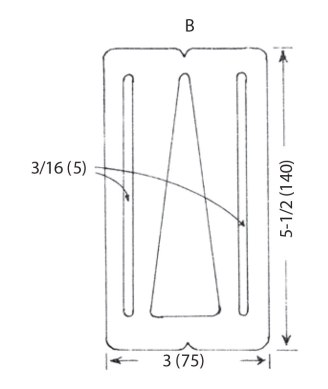
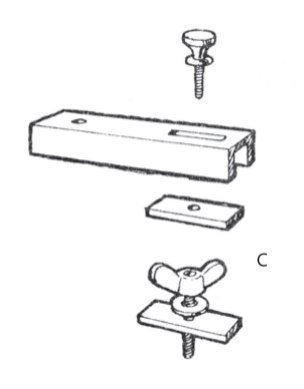
Prepare the components and gauge to thickness on the piece which is to contain the tails, D. Choose a suitable bevel-edged chisel that is only slightly smaller than the chosen size of pin, E. Place the gauge on the work and adjust the bar to give a width on the gauge line only slightly more than the chisel size, F. True up the bar with the edge of the gauge, either by a try square or against the edge of the wood. For angled dovetails use a sliding bevel on the angle already on the wood.
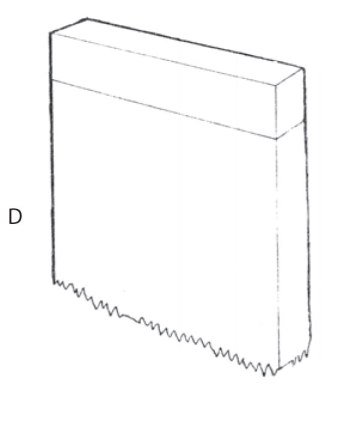
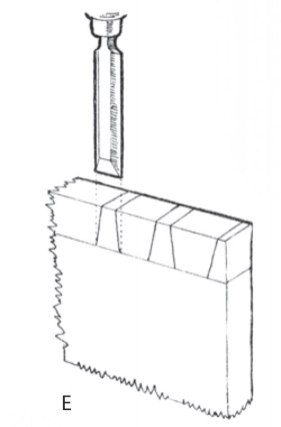
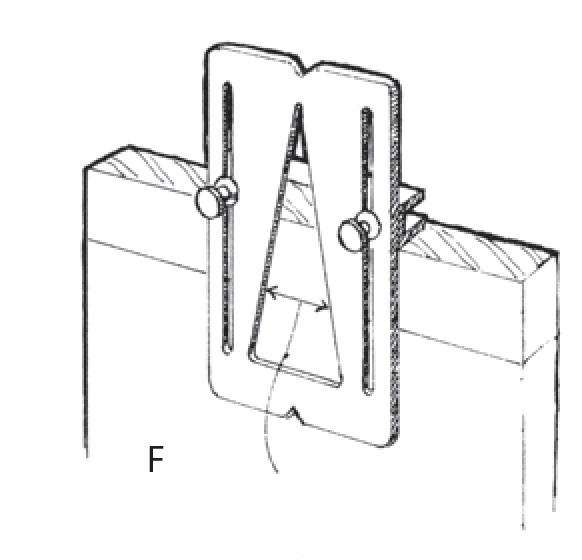
The two outside or half pins must be a little larger than half size, so, with a pencil, mark down the two outside centre lines to achieve this effect. About 1/8″ (3 mm) is usual for medium-sized dovetails. The distance between these two lines is divided equally in the standard way to give the centre lines of all the pins, G. Alternatively a rapid calculator can be made to fix centre lines by drawing equispaced converging lines on a piece of plywood as in H. The horizontal lines are parallel, and the end of the piece of wood is offered up to the required number of converging lines and kept parallel to the horizontals. The centre lines are then easily picked off, J.
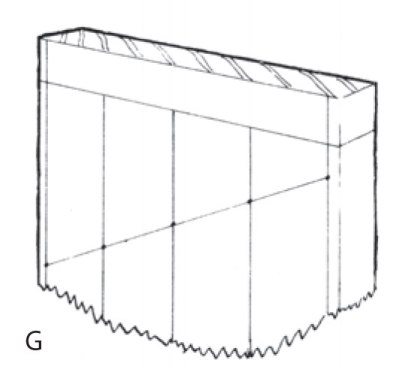
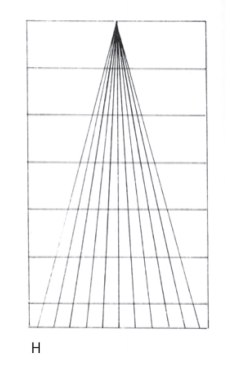
The gauge is now placed on the wood with the nick over each centre line in turn for the pins to be marked, ideally with a fine ballpoint pen, K. Shellac brushed on gives the surface a “bite” on which to mark. On the end grain the square marking is done with a marking awl, which provides a small groove into which the chisel can be put decisively should there be any error in sawing. Beginners can run a thick pencil into it. Two pencil lines will be formed, and one line should be removed with the saw, L. The two pieces are held together for the marking of the second piece, O. A pair of holding brackets, M, is useful for this process; one will do for small work. The two pieces are held to the bracket with light G cramps.
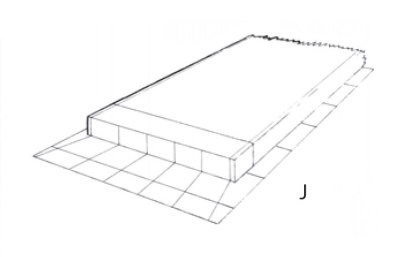
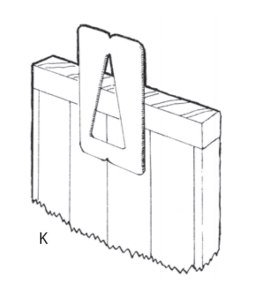
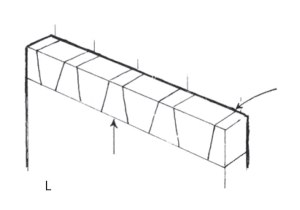
A dovetail marking knife is essential for fine dovetails but is useful for all sizes, N. It is made from a piece of tool steel 4″-5″ (100 mm-125 mm) long by 1/2″ x 1/16″ (12 mm x 1.5 mm); a piece from a power hacksaw blade is very suitable. Both the little bevels are on the same side, giving a left-hand and a right-hand knife. In use, O, the flat side is held hard against the dovetail, and this tool will get into the most inaccessible corner where the marking awl or pencil never got in the past.
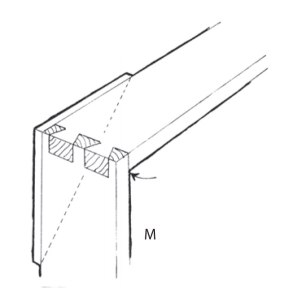
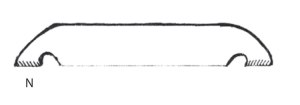
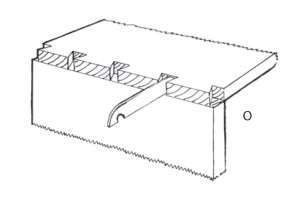
The holding bracket, M, has a further use when the front or rear corner is to be mitred to take a groove, rebate or moulding. The mitre is often, though not necessarily, at 45°. But if the pieces to be joined are not equal thicknesses, the angle cannot be 45°. What is important, however, is that the sum of the two angles should be 90°.
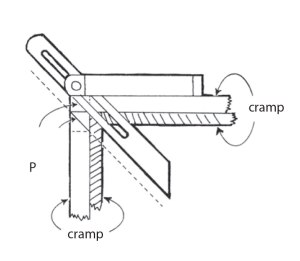
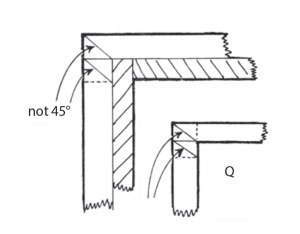
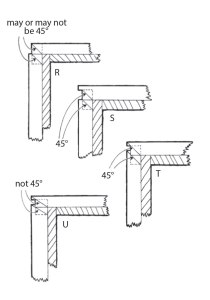
The remaining six diagrams, P-U, show how, when the pieces are held at 90°, both angles can be marked from the same edge, using a sliding bevel.
— Meghan B.